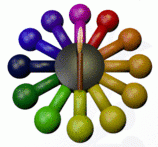Code of Practice Toolbox
A Guide to the Code of Practice for Exempt Laboratories
by Terry Price
⟴Laboratory Manager(See CofP pg 9)
Each school must in writing, appoint a suitably qualified member(s) of staff to be a Laboratory Manager who is in charge of hazardous substances used for education in all departments including science, art, technology and horticulture. (Pg 9 of CofP)
⟴Security of hazardous substances(See CofP pg 12)
Laboratory and Prep Rooms shall be locked when not supervised. (Pg12 of CofP)
⟴Hazardous Substances. (See CofP pg 17)
Hazardous substances are divided into Classes(1-9), Sub Classes and Categories (A to E). The Class and SubClass determines the type of hazard and the Category determines how severe it is. Category A is the most severe.
ie. 3.1A: Class 3 and SubClass 1 3.1 = Flammable Liquid.
Category A = Highly Flammable.
⟴Storage and Handling (See pg 27)
Store Chemicals in their Class and then alphabetically within each Class. There are maximum total quantities limits for some classes of Hazardous Substances that may be stored in schools (CofP pg 56)
Each Class may have special storage requirements.
Class 3 Flammable Liquids: pg 35
Class 4 Flammable Solids: pg 39
Class 4.3 Dangerous when wet: pg. 41
Class 5.1 Oxidisers pg 43
Class 6.1 Acute Toxicity pg 45
Sub classes 6.3 to 6.5 Irritants and Sensitisers pg 48
Sub classes 6.7 to 6.8 Chronic Toxicity pg 51
Class 8 Corrosives pg 54
⟴Creating an Inventory.
An inventory of all Hazardous Substances must be completed once a year.
Download this Inventory of Allowable Substances to use as a template.
See the Inventory of Allowable Substances CofP pg 59
⟴Use of Hazardous Substances in Teaching: (See CofP pg 17)
Chemicals not on the above Inventory of Allowable Substances link (pg 59) may be banned in schools. Check their status using the lists and table below:
MOE-allowable substances listed in Appendix 2, pg 59
MOE-forbidden substances listed in Appendix 3, pg 70,
MOE-forbidden classes listed in Table 4.1 pg 22
⟴Substances not on any list and not in a forbidden class.
If a substance is not on the allowed list and you would like use it at school then you must complete a Hazard Substance Assessment Form.
Hazard Substance Assessment Process (See CofP pg 23)
If a substance is not on any list it can be assessed as either allowed or not allowed.
Use the Hazard Assessment Process
Find the SDS sheet for the Hazardous Substance. The SDS sheet must include the Risk Codes and Safety Phases for the substance and the HSNO classifications.
⟴Labelling
Label reagent bottle/containers as well as secondary containers for liquids. Label with the name, concentration and icon warning symbols ( CofP pg 73 +74)
⟴General Safety. (See CofP pg 26)
Appropriate protective clothing and equipment shall be worn when handling hazardous substances.
Food intended for consumption shall not be consumed or stored in a laboratory.
⟴Create a Laboratory Folder (See CofP pg 26)
A copy should be held in the laboratory area and another copy held outside of the laboratory area. Your laboratory folder should include:
➽Inventory: Printed copy updated annually.
➽SDS: Printed copies for all Category A & B hazardous substances.Attach Hazard Assess Process Sheets to SDS for chemicals not on MOE Allowable list.
➽Safe Methods of Use(SMU) (See CofP pg 35-55): Add printed copies of the general Safe Method of Use summaries for each class and their subclasses.
➽Emergency Planning CofP pg 30: Include Map of school showing location of chemical dangerous good store and flammable cupboard clearly marked.
Include 24hr emergency numbers (security, property manager,emergency services, phone numbers.)
This information should be available to emergency services if requested during an evacuation.
➽Safety Equipment: List of safety equipment with regular maintenance checks and instructions of use. ie Spill Kits, respirators, full face shields, safety blast shields etc.with their location and instructions of use.
⟴Safe Methods of Use(SMU) (See CofP pg 34 -55) see our page on Safe Methods of Use: an Approach to Compliance
